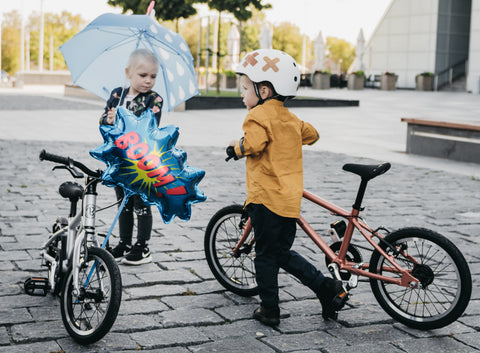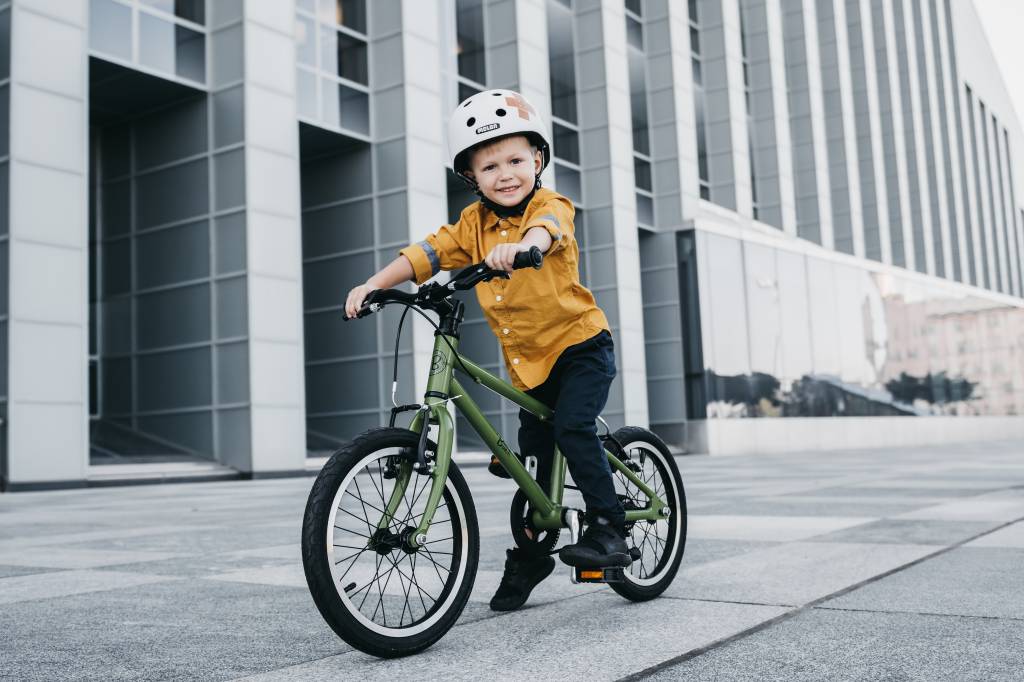Cycling With Children
And the saying that you cannot reinvent the wheel does not quite apply to this. Over the past two decades there have been so many small, but extremely important new comings to the world of bicycles, that've made all the difference how we perceive this simple, yet beautiful contraption. Also the ways of how we teach children to ride has improved immensely.
Take for example the balance bike. What now seems to be a complete must - was not a thing just a few years ago. This simple stepping stone to cycling has more benefits that anyone would care to count. We've never met a child that wouldn't enjoy riding it, it develops the sense of balance and steering unmatched to anything else and last but not least - they are comparably cheap to bicycles.

Once the kid has outgrown his favorite play-toy, it's usually the perfect time to introduce them to pedaling and braking. This comes more often than not with the crutches that are called balance wheels. And just because probably every adult, who knows how to cycle started their journey with a set of these, doesn't mean that they're any good. The only thing that balance wheels are good for are teaching kids bad habits and holding them back from learning to ride properly.
If your kid has spent quite some time on a balance bike, it will probably take not more than a few hours for him to grasp the basics of pedaling and maintaining balance. This will not exclude any future crashes, but it's certain that this method will yield immensely better results than using balance wheels.
A bad habit that haunts a large part of adult riders as well - putting the bicycle's saddle to low. If you can reach the ground with your full foot while sitting on the bicycle's saddle - it's too low. Arguments that this makes cycling more comfortable are just plain wrong. Sacrificing pedaling efficiency just to nurture a bad habit by masking it as comfort doesn't do good to anyone. The rider just exhausts his powers faster and that makes cycling look like hard work.

Teaching kids from the start that they should start off riding by placing one of the pedals (depends on each person's preference which one) almost completely upright and stepping on it. This will propel the bike forward with enough speed to maintain balance and set you up in the proper position to sit on the saddle.
What's harder to teach the children is to get off the saddle before they stop with the bicycle. And it will result in a fall inevitably, but teaching the most efficient way to cycle early on might just change the way children look at cycling for all of their lives.

Once all this has been handled and taken care of it's time to teach kids to coast. Walking and running comes naturally to kids, but cycling is a skill that can only be taught. At an early age the child's mind comprehends that to move forward, you must pedal at all times, just like walking. As a result the kids get tired really fast. If you're on a longer cycling tour, you will immediately notice that the kids are pedaling furiously for a short time and then they're tired and want to stop. Teaching to coast without pedalling will eliminate this problem and bring more joy to cycle in general. The kind of "look how we pedal and coast" approach is vital.
Last but not least is understanding braking. Everything must come to a stop. One way or the other. We want it to be controlled and safe for everyone. And just like coasting doesn't come natural to a child, so does braking. Teaching them to operate them properly will avoid crashes and injuries for years to come.
Ride safe and have fun!













